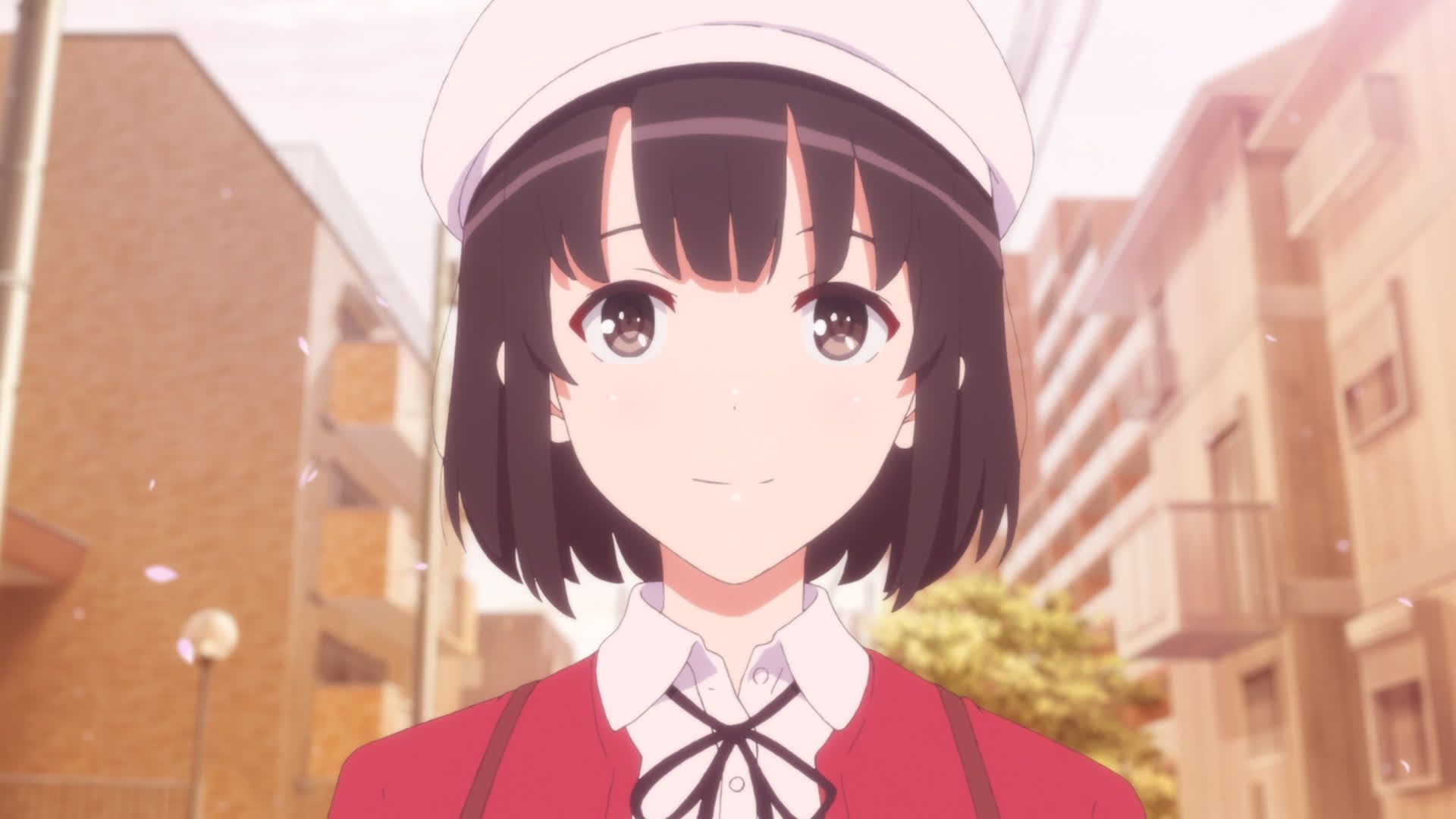Saenai Heroine no Sodate-kata (localized to "How to Raise a Boring Girlfriend," shortened to Saekano from here on out) is a series I have a storied history with. Not for any particularly good reasons, mind you. It mostly revolves around the (at-the-time) controversial first episode. For the unfamiliar, the first episode of Saekano's first season is completely removed from the normal continuity of the plot and instead operates as a meta-surrealist, self-aware commentary of the harem anime genre as a whole while also doubling as a fanservice episode with all the main heroines frequently depicted in the nude as they bathe at a hot spring.
It is not a normal anime episode.
While I was in college (which was when the show was airing), this infamous "0th episode" of Saekano was the focal point of much controversy, humor, and memorable conversation. After classes in the late afternoon, myself and a group of friends had found an empty classroom, plugged a laptop into the projector, and started streaming some anime for the posse of four to watch. Not just any anime, of course, as a new season had started, and we were doing this thing called the "Ten Minute Test" where we would watch the first episode for 10 minutes, then debate and discuss our thoughts on what we had just witnessed.
Saekano was one of the shows we picked to watch. While some members of the group knew about the first episode's content (it's me. I'm some members.), the look of confusion and concern that grew on half of the group's faces as the minutes flew by was unmistakable. Like a bad ripoff of an avian-themed Alfred Hitchcock movie, shock and terror consumed our collective psyche as the 10 minutes ticked down, ending in a mutual agreement that this show was never to be group watched again.
It is not a normal anime episode.

Saekano is not a normal anime series. At its core, it is little more than another rom-com series with an unassuming main male protagonist, prototypical love interests that fall into existing character archetypes, and a plot that requires a decent suspending of beliefs of how the world works. Its popularity is largely on the back of the character designs by Kurehito Misaki, its animation quality (which was quite good for the time), and its character writing and self-aware humor landing with the "intelligent" audience. (It's mostly that first one.)
But this is not an article about Saekano the TV series. This is an article about Saekano the movie. A movie that takes place almost directly after the conclusion of the second season of the TV anime, a movie that covers the remaining six volumes of the source material and attempts to wrap up all the loose threads. To watch the film is to want more from the world that the author has created, to accept all of Saekano's existing faults and imperfections, and to be willing to suspend beliefs again. To watch it is to see the characters you've known for 25 episodes just that one last time, in search of one thing, and one thing alone:
A finale.
This is not a recap film. There is no abridged summary for the previous two seasons at the beginning of the film.
There are spoilers ahead. You will learn who wins. Should you wish to remain spoiler-free and want to skip to the conclusion of the article, you can press this link to hide the main content of this article and skip to the spoiler-free conclusion.
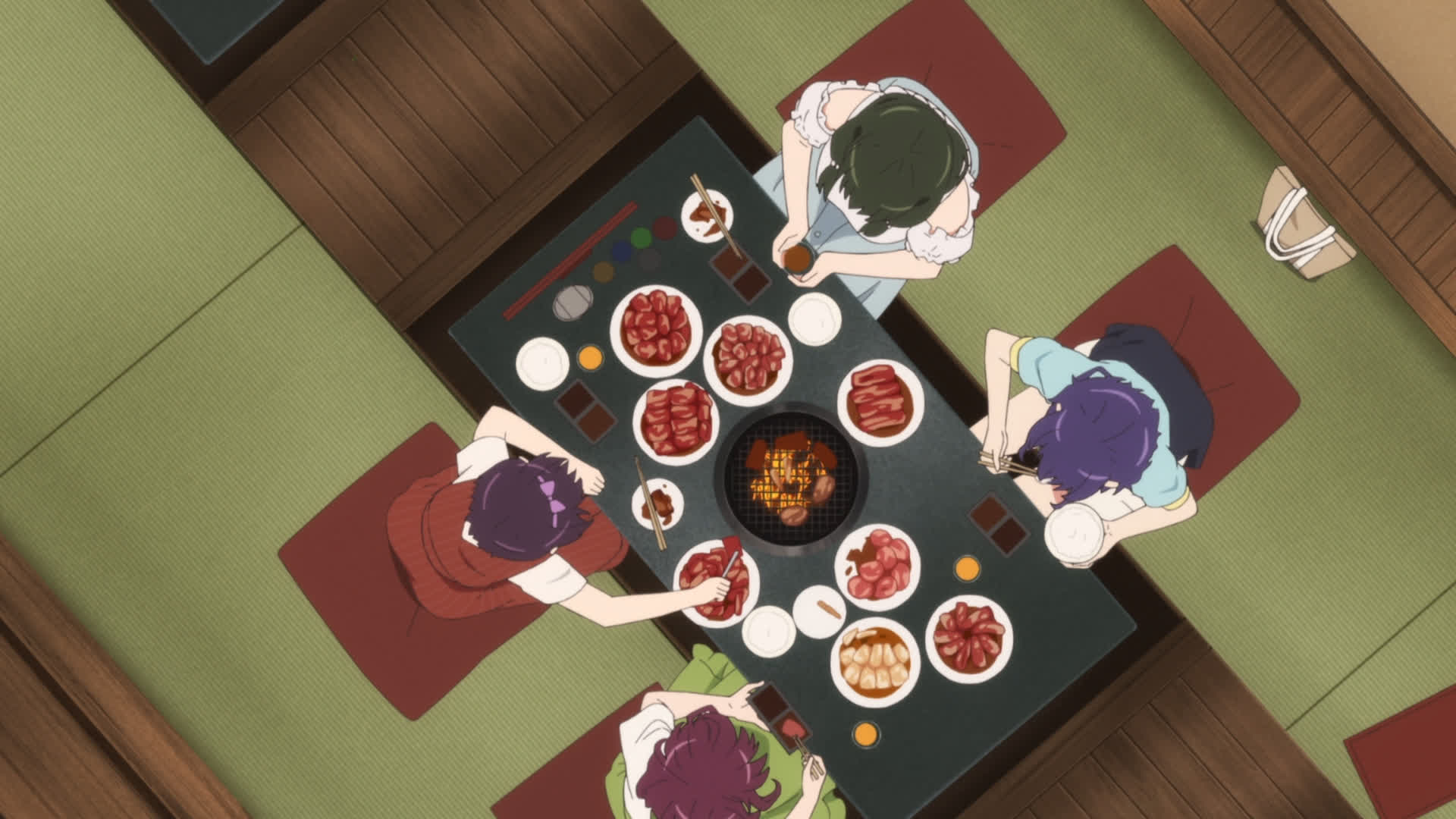
The later half of season 2, as well as the entirety of the movie, focuses on the development of Blessing Software's new game titled, "Saenai Heroine no Sodate-kata." The in-universe game having the same title as the series it's set in is no coincidence, as it's used as a mirror and story-telling mechanism for the characters that are making the game. This is plainly evident in how the movie plot picks up: having written most of the routes for the non-main girls in the game, Tomoya, the main character, struggles with writers' block as he can't quite write a scenario for the main heroine, Meguri Kahou. This is basically the exact same situation that he finds himself in outside of game development, as most of the stories with everyone that isn't Megumi Katou are done and dusted. All that remains, and all that needs to be resolved, that needs to be written, is that final relationship between the main character and the boring girlfriend.
As a result, it should not surprise you that the vast majority of this movie is dedicated to exploring Tomoya's relationship with Megumi, and how it changes and evolves. Conversations over in-game scenes are used as a proxy to indirectly talk about their real-life relationship. When Tomoya asks Megumi how the protagonist should feel in a certain moment, her answer is reflective of not only the game character's feelings, but her own as well. Their transition to calling each other by their first names mirrors the story of the characters they themselves are creating in the game. Avert your eyes, kids: there is even a graphically explicit hand-holding scene where the duo discusses the intricacies of performing such a forbidden act, while simultaneously performing said act in the name of their creative endeavors.
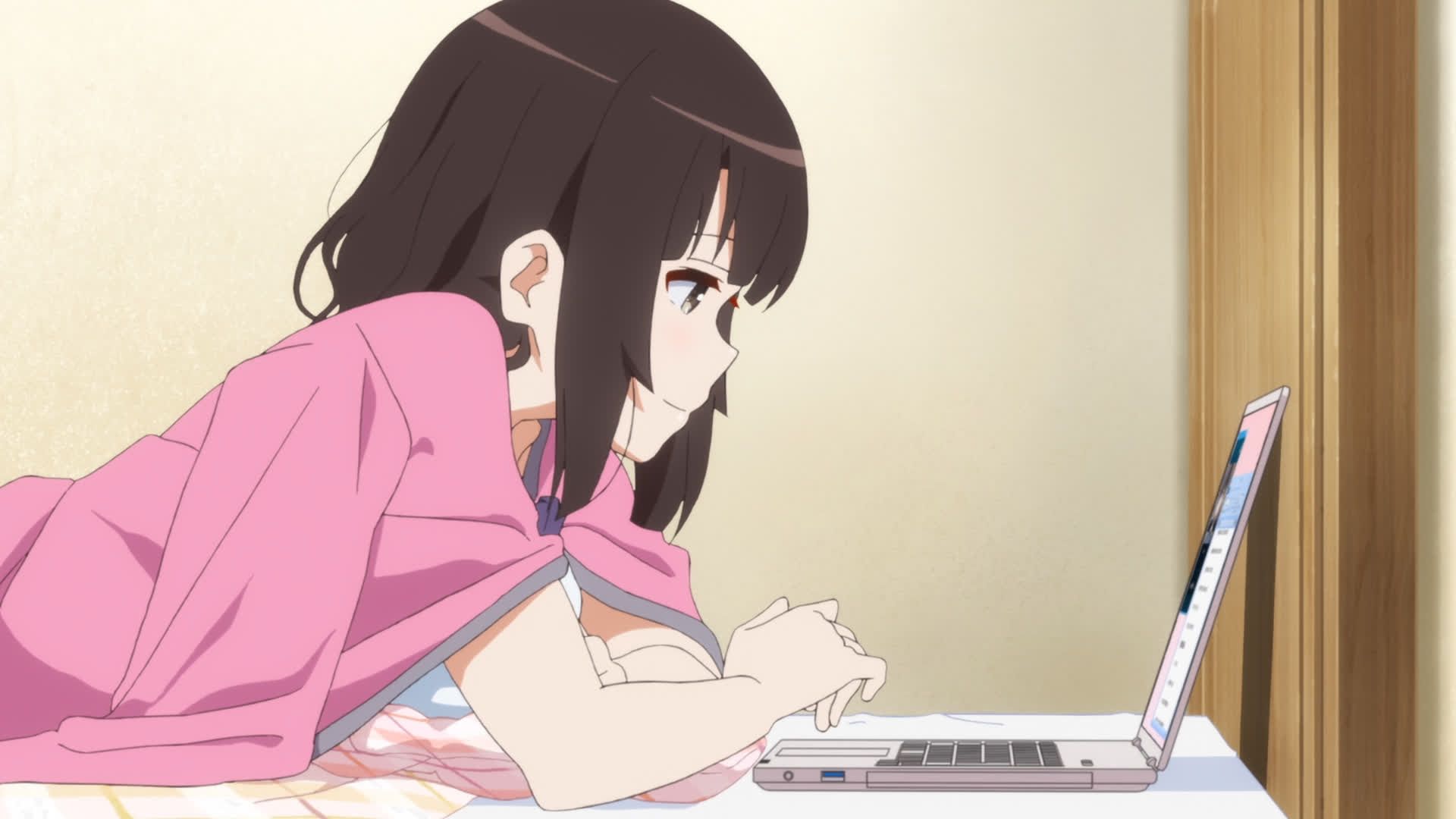
To some degree, this is cute storytelling. Using visual novel scenario writing as a mirror for in-universe relationship progression is interesting, and it's the kind of "meta-aware" writing that the series is known for. Given that the movie primarily focuses on the two of them, getting injected with plenty of sickly sweet, small romantic advancements is a welcome change of pace from the TV series, which focuses on a wider cast of girls and jumps between them.
However, this is also, unfortunately, the most confusing part of the storytelling. As Tomoya interacts more and more with Megumi throughout the movie, it becomes clear that the lines are blurring between the emotions he's trying to convey within the script (toward Meguri) and the emotions he bears toward the actual inspiration for them (Megumi). This comes up in two main points, the first of which is when Tomoya asks Megumi out to go location shooting in Ikebukuro, to which Megumi asks if it could be for things besides the game they're working on, and Tomoya sheepishly (but almost excitedly) agrees with that idea. The second of these moments is when Tomoya is nearing completion on the Meguri script, but begins to continuously typo the name for Meguri (巡璃) as Megumi (恵). These points are clear examples of Tomoya's acknowledgment of the relationship the two of them have, but his commitment to the relationship isn't really obvious at all. While the two examples above make his feelings clearer later on, as a viewer drawing parallels between their relationship and the game's writing, it ultimately creates a level of confusion where you don't entirely know what Tomoya is thinking; a level of emotional confusion that hinders the storytelling, in fact.
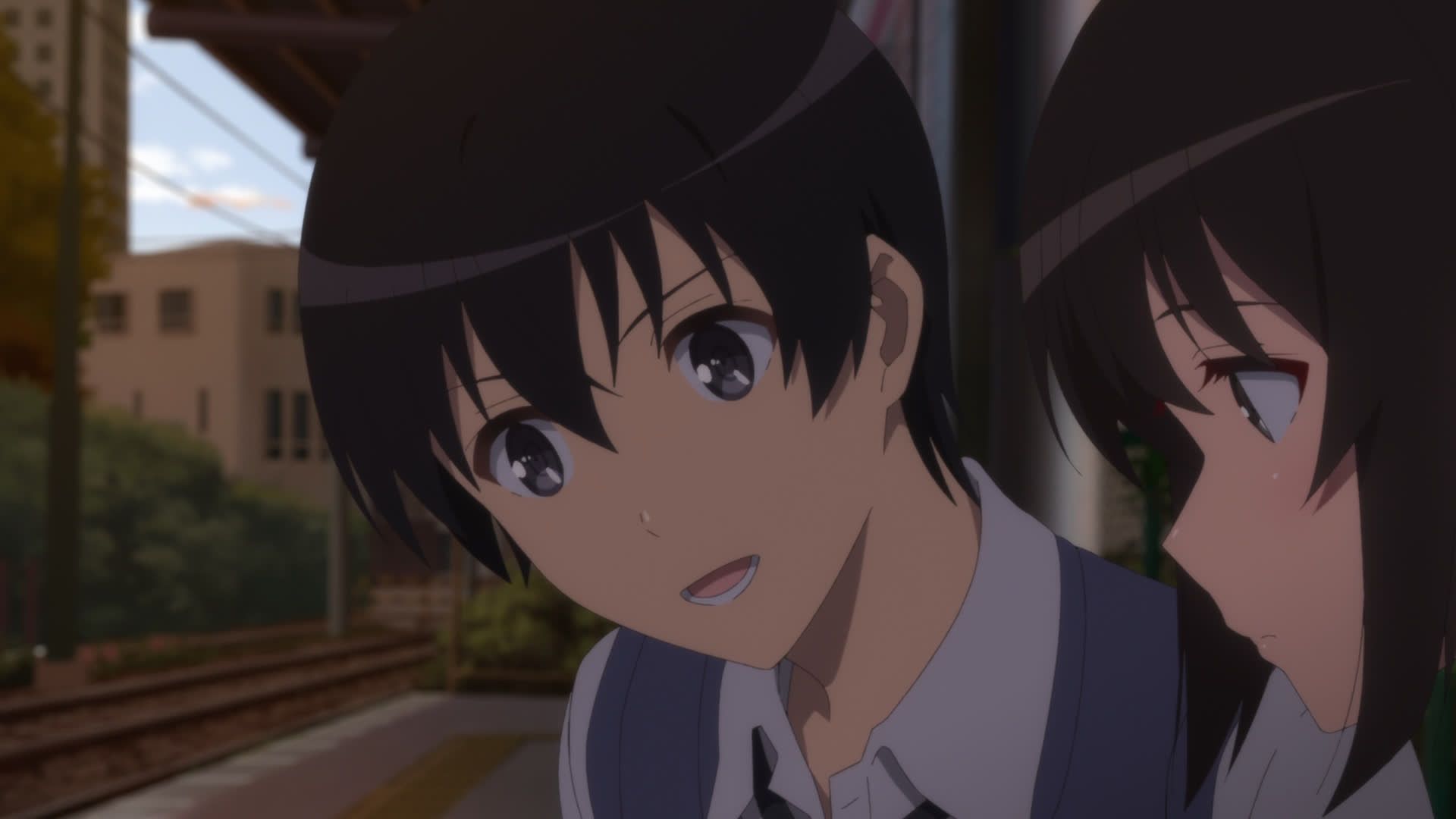
No film is complete without conflict and resolution, and Saekano is no different in that aspect. The central conflict is set in motion when an unexpected event causes Tomoya to have to pause his involvement with the game he's working on as he relocates to Osaka to help Eriri and Utaha wrap up loose ends on Fields Chronicle XIII, the new game they're doing contract work for. This abandonment leaves Megumi and the rest of Blessing Software in a pinch, and their relationships sour as the optics of "choosing them over me" cloud Megumi's emotions.
This is the second of the film's major weaknesses. Setting aside the logical plotholes (you're telling me that a famous writer and a famous artist couldn't find or trust literally anyone else to act as their liaison?), one of the lines that is intended to have a large emotional impact is Utaha's comment on how relying on Tomoya would "close off the door to [our] routes," and to come to peace with the consequences of their plea for help, in that they'd never be able to win Tomoya's love as a result. Emotional, sure, but there's almost zero logical basis for this line of reasoning. Utaha notes how Megumi would form a strong bond with Tomoya as a byproduct of his actions, but this seems to imply that their relationship would not exist without them, which is a slap in the face to the steps their relationship had taken over the first half of the movie.
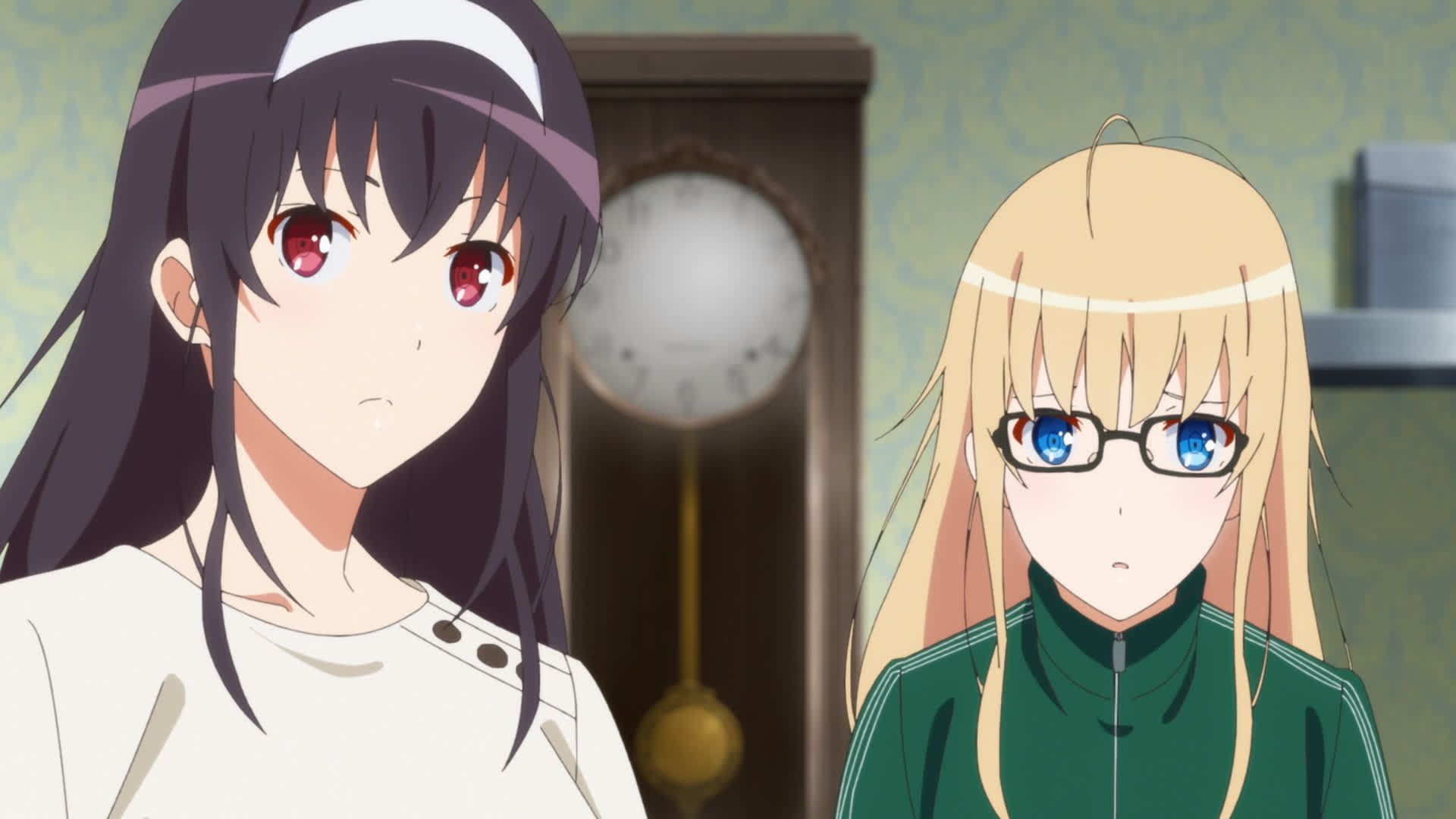
After wrapping up his job with Utaha and Eriri, Tomoya returns home to find an unsurprisingly angry Megumi. You can probably imagine how this goes, and it's worth watching the movie for all the nuances (since this is what all the build-up is for): Tomoya apologizes, Megumi can't find it in her heart to get overly mad, and ultimately, the two resolve their issues after Tomoya confesses his love for her. Megumi wins! Good job, Megumi!
The rest of the film is mostly spent closing one last loose end: Eriri's reconciliation with Megumi's victory. The childhood friend, having previously bawled at the revelation that "asking Tomoya for help would mean putting him on the Megumi route," makes peace with the fact that she's lost the love battle by asking Tomoya if he loved her 10 years ago one last time. After tying a knot on Eriri's story, the game finishes development, and the gang is shown in a montage selling the finished product at Winter Comiket. It is rather unfortunate that the storytelling found in the first half of the film (using game scenarios as a proxy for the character's relationships) isn't really found in the tail end. But that privilege is exclusively for winners, I suppose.
Actually, maybe that's not entirely true. In some ways, the film culminating with the game's completion mirrors the fact that the movie, and by proxy the main series the game is named after, has come to an end. It has told all the stories it wants to tell. The film doesn't really... do anything with that symbolism, though. But hey, it's there!
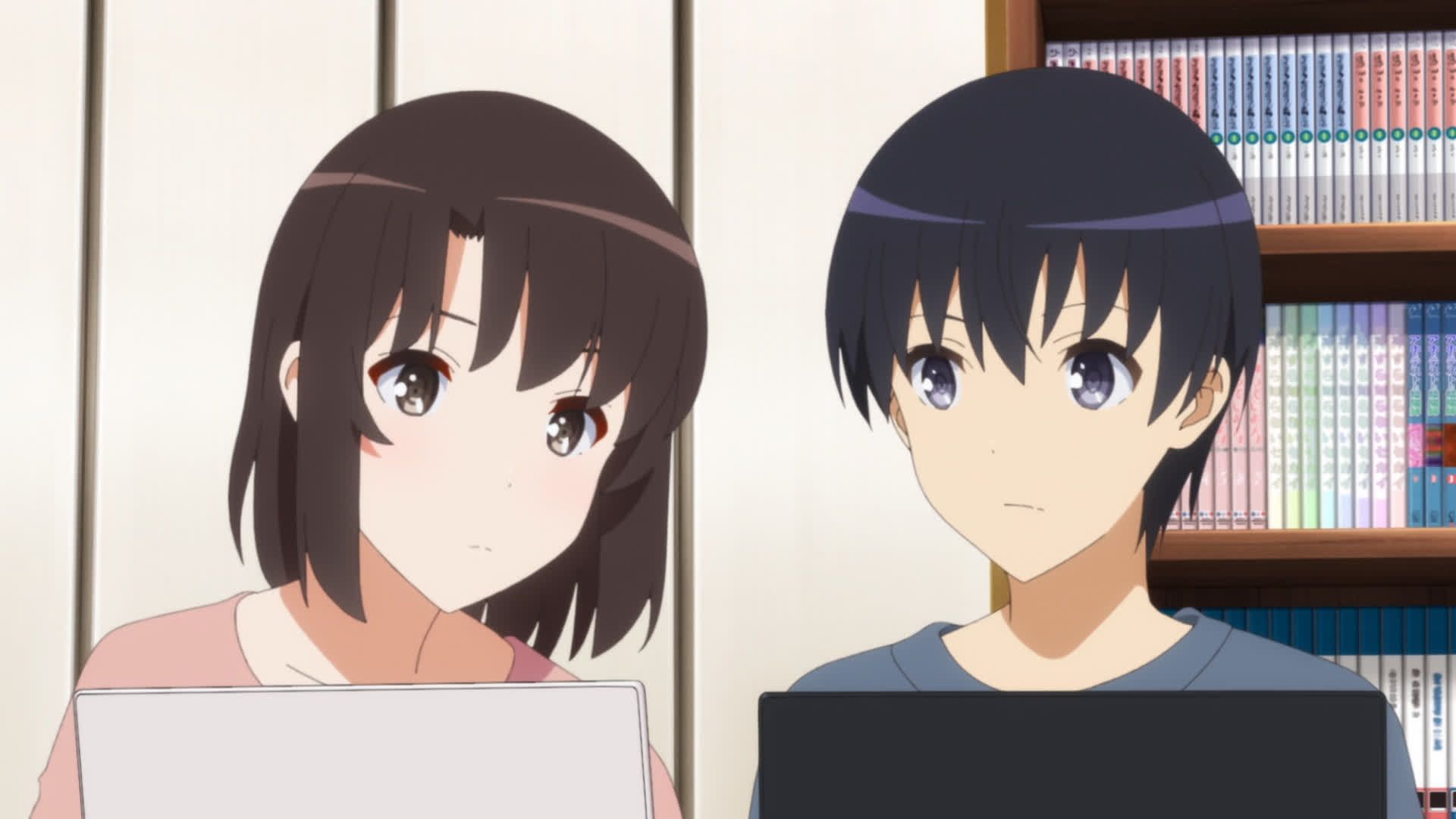
Look, I get it. This sounds like a whole list of negatives, right? Well, I haven't even covered how the animation is honestly kind of bland, with some scenes being surprisingly poorly drawn for a theatrical release, or how the film's pacing can be excruciatingly slow at times, yet blazingly fast at others (presumably a byproduct of having to fit in six volumes' worth of content into one film). Michiru and Izumi also get very little screentime, despite seemingly becoming more important characters in the later half of the TV series. This is very much a cut-and-dry, vanilla film that isn't taking a bunch of chances.
But, realistically, does it need to?
As mentioned before, this is not a film for new fans of the series. Its primary purpose is not to find new fans, or really tell a story that's unique to itself, its purpose is to provide closure for existing fans, to animate the final moments of the world and story of Saekano. Perhaps traditional critique is too harsh for a film like this. To watch the film is to have accepted all its faults, to suspend beliefs and be willing to look past plotholes, in the name of finishing the story.
And, to its credit, if you consider the things that it's trying to do well, it succeeds at for the most part. The relationship between Megumi and Tomoya is front and center throughout the movie, and anime fans absolutely get the romantic moments that the previous two seasons of the TV anime have hinted at and led up to. There's the same sprinkling of meta-aware jokes that the series is known for, and basically every character that the fans care about gets some kind of representation here (though, again, Michiru and Izumi feel like they get the short end of the stick). While the animation quality is questionable at times, it's not any worse than what the TV show had while it was airing.
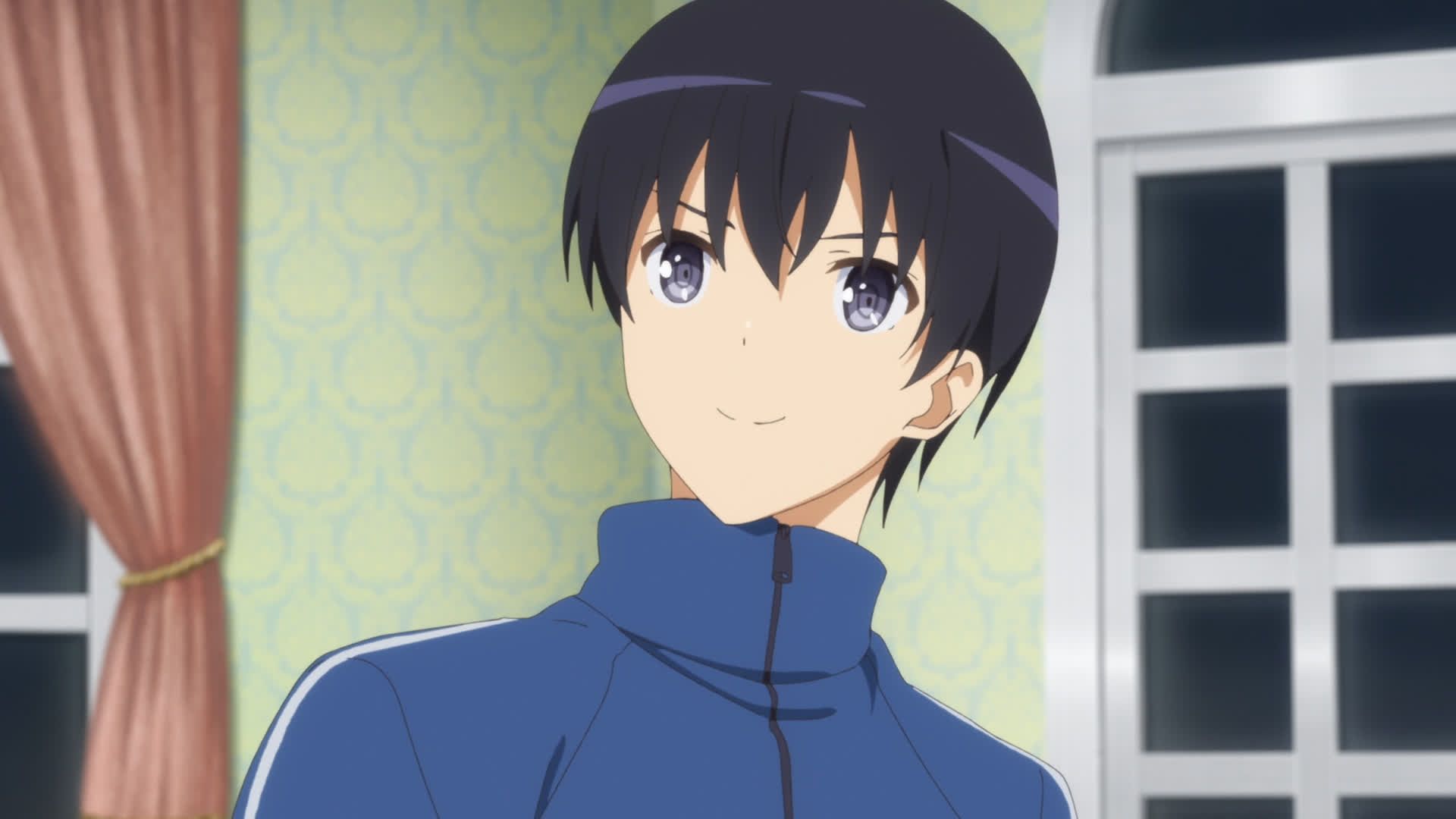
In early 2015, when Saekano first aired on TV, the western reception to it was pretty warm. It hasn't really aged well since then, as it doesn't do much to distinguish itself from the well-worn-out genre it finds itself in, but in that moment, it felt special. If you were just getting into anime after 2014—well, maybe you fell for Nisekoi, No Game No Life, Tokyo Ghoul, or other heavy-hitting titles from that season instead—but the meta-aware nature of the show's writing very much appealed to the crowd that thought, "wow, this anime is intelligent."
For those fans, or for anyone that's otherwise a fan of Saekano (and I don't think you watch the prerequisite two seasons of the show without being a fan of the series), the movie is probably a welcome sight. While it's not mind-blowing or world-bending in any regards, it provides closure to the world that the TV series was definitely missing. Maybe "definitively adequate" is the best way to describe Saekano's film finale. After all, it's pretty much just more of the TV series that preceded it, but stretched out to six times the running length.
The Verdict: Watch if you're a Saekano fan, but it's not worth starting the TV series to get to it at this point
Questions or comments? Tweet us at @fansubbing! You can also follow us for updates on the latest articles, too.
